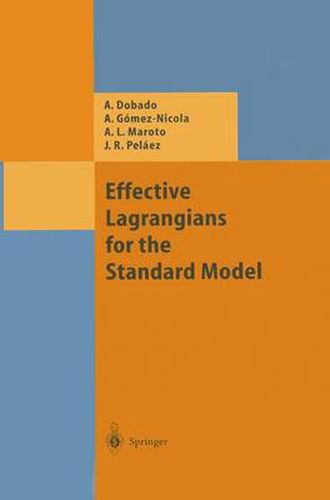Readings Newsletter
Become a Readings Member to make your shopping experience even easier.
Sign in or sign up for free!
You’re not far away from qualifying for FREE standard shipping within Australia
You’ve qualified for FREE standard shipping within Australia
The cart is loading…






This title is printed to order. This book may have been self-published. If so, we cannot guarantee the quality of the content. In the main most books will have gone through the editing process however some may not. We therefore suggest that you be aware of this before ordering this book. If in doubt check either the author or publisher’s details as we are unable to accept any returns unless they are faulty. Please contact us if you have any questions.
This book is devoted to some recently developed techniques in quantum field theory (QFT), as well as to their main applications to different areas of parti cle physics. All together they are known as the effective or phenomenological Lagrangian formalism. Motivated by the enormous amount of work carried out in this field during the last years, our purpose when writing this book has been to give a modern and pedagogical exposition of the most relevant as pects of the topic. We hope that our efforts will be useful, both for graduated students in the search for a solid theoretical background in modern phe nomenology and for more experimented particle physicists willing to learn about this field or to start working on it. Even though we have tried to keep the book as self-contained as possible, it has been written assuming that the reader is familiar, at least, with the most basic concepts and techniques of QFT, gauge theories, the standard model (SM) and differential geometry, at the level of graduate studies. It is therefore possible that senior high-energy physicists may find the book too detailed and so they could probably omit several sections. The book is divided into two main parts and the appendices. In the first part we introduce the fundamentals of the effective Lagrangian formalism and other basic topics such as Ward identities, non-linear sigma models (NLSM), spontaneous symmetry breaking (SSB), anomalies, the SM symmetries, etc.
$9.00 standard shipping within Australia
FREE standard shipping within Australia for orders over $100.00
Express & International shipping calculated at checkout
This title is printed to order. This book may have been self-published. If so, we cannot guarantee the quality of the content. In the main most books will have gone through the editing process however some may not. We therefore suggest that you be aware of this before ordering this book. If in doubt check either the author or publisher’s details as we are unable to accept any returns unless they are faulty. Please contact us if you have any questions.
This book is devoted to some recently developed techniques in quantum field theory (QFT), as well as to their main applications to different areas of parti cle physics. All together they are known as the effective or phenomenological Lagrangian formalism. Motivated by the enormous amount of work carried out in this field during the last years, our purpose when writing this book has been to give a modern and pedagogical exposition of the most relevant as pects of the topic. We hope that our efforts will be useful, both for graduated students in the search for a solid theoretical background in modern phe nomenology and for more experimented particle physicists willing to learn about this field or to start working on it. Even though we have tried to keep the book as self-contained as possible, it has been written assuming that the reader is familiar, at least, with the most basic concepts and techniques of QFT, gauge theories, the standard model (SM) and differential geometry, at the level of graduate studies. It is therefore possible that senior high-energy physicists may find the book too detailed and so they could probably omit several sections. The book is divided into two main parts and the appendices. In the first part we introduce the fundamentals of the effective Lagrangian formalism and other basic topics such as Ward identities, non-linear sigma models (NLSM), spontaneous symmetry breaking (SSB), anomalies, the SM symmetries, etc.